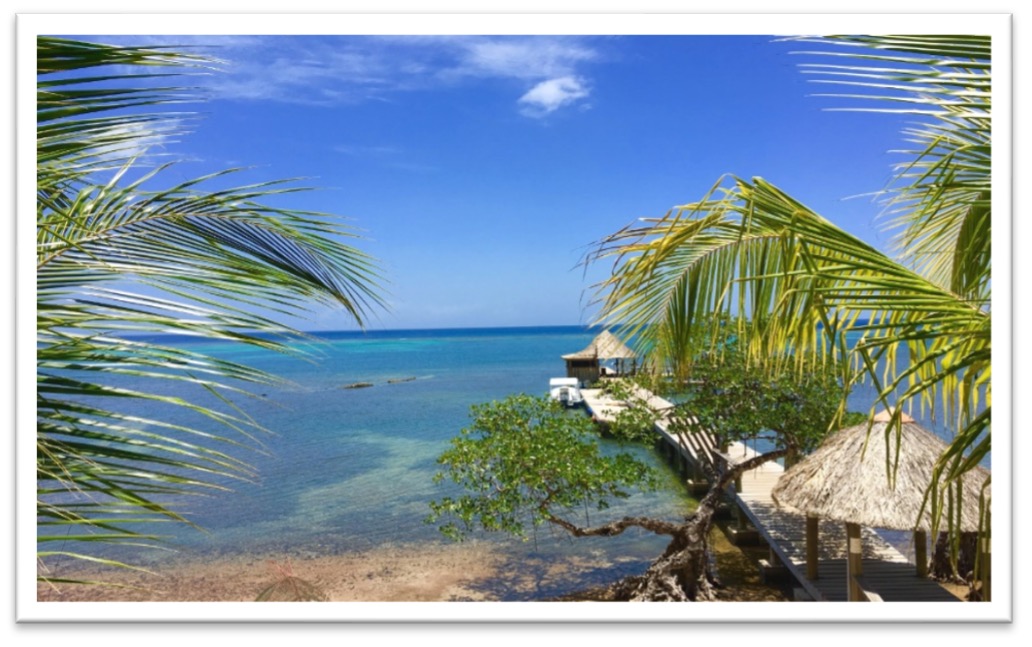The Central American country of Honduras is a land of contrasts with exceptional versatile appeal. From the instagrammable sunsets on the Honduran Bay of Islands to the world’s second largest coral reefs (Meso-American Barrier Reef) off the Coast, there’s something for tourists who visits Honduras.
As the world continues to grapple with the post-pandemic Covid recovery, The Bay of Islands are poised to reap the benefits of eco-sustainable tourism. These islands offer incredible value that continuously showcases the Caribbean appeal to those who visit this beautiful, soul-rich Central American country.
But the islands’ culture and tourist economy dollars that resonates strongly can only be stretched so far. Producing value and generating tourist dollars are relatively easy pickings; one that generates a noticeable tax base for the Honduran economy. Skimming the surface, Honduras offers attractive price points for tourism; after all, it is accessible by many nonstop flights originating out of Mexico, the United States and South America. It becomes more of a challenge to search out additional sources to create a viable economy in which the Honduran Lempira (local currency) can improve upon.
Digging a little bit deeper; the word Honduras is Spanish for deep or in this case, “deep water” a reference point for several bodies of water off the coast made famous from Christopher Columbus. He exclaimed after fighting strong easterly winds that he was finally out of the depths and with that, the name Honduras was born.
There is a dichotomy that exists between island culture and the mainland of Honduras through the prism of geography. A mountainous region, Honduras is part of the very active Pacific Ring of Fire with periodic earthquakes, eruptions. Honduras also showcases rich flora and fauna and it’s packed into a country roughly the size of Pennsylvania. Because of this, Honduras is the second geographically largest country after Nicaragua. The Gross Domestic Product was around 23 Billion Dollars in 2021, somewhat less than the American state of Vermont (29 Billion Dollars in 2021). In addition, the Gross Domestic Product per person works out to around $2,750.00 but is rising, often by nearly three percent a year.
The average annual salary in Honduras is between 5-7,000 USD. Remittances or funds sent from Hondurans living abroad in 2021 varied around 658 million dollars, which is a significant year over year increase from the prior COVID year(s). Tapping into a wage that can beat $5-7,000.00 annually requires looking not only to the United States but also countries around the world. Those that migrate have literally nothing to lose, including their lives, in the hopes of finding work, safety, security and peace. Helping those that live in Honduras, creating infrastructure programs that can lead to commerce are a step forward towards stability. Meanwhile, the hands of time continue to march forward.
Several pockets of geothermal energy are spread unevenly throughout Honduras, mostly relegated to the Southern portion of the country that it shares with El Salvador. Honduras straddles both the Caribbean Sea to the East and a tiny portion connects to the Pacific Ocean.
Not far from these geothermal pockets lie vast mineral deposits including gold, silver, lead, cadmium and even lithium. This, on top of a topography that has an abundance of fertile soil and an ideal growing season year-round that makes this attractive for agricultural development.
In a bygone millennium, Honduran minerals such as gold and silver were mined and stolen after the arrival of Spanish/Italian explorer Christopher Columbus and his armada of ships. Columbus was still searching out a shorter route to the fabled West Indies when he skirted the coast of Central America on his fourth and final voyage.
Torturing and murdering went hand in hand with the mining of rare earth elements, leaving behind a desecrated landscape that strikes at the heart of Hondurans even to this day. The minerals were readied for travel to Spain, Italy and other parts of Europe, leaving the marginalized indigenous populations with a horrific landscape. Consistent decades of land abuse have led the current Honduran President, Xiomara Castro to make significant cutbacks to future mining. Recently, Castro announced a ‘cancellation’ of mine permits for both Honduran metal and non-metals. This shouldn’t come as a surprise as part of her campaign focused on preserving natural areas of high ecological value and eliminating open-pit mining.
Herein lies the dilemma that is conveyed:
“How can Honduras (and other Latin American countries) expand on the potential for this increasingly vital industry that serves the citizens best, and contributes to sustainability and social justice?”
President Xiomara Castro took office campaigning under the idea(s) of pulling the Central American nation “out of the abyss” caused by failed economic policies along with rampant corruption. Given that, she is to be commended for the desire to protect the environment. Shutting down mines does weigh on the Castro administration against not only preserving the environment but also at displacing Hondurans who rely on mining for employment. Growing a future for clean, sustainable employment practices and a future with climate change does present logistical challenges for Honduras (or any country for that matter).
A quick glance of Honduras’s timeline shows it has been beaten down from earthquakes, hurricanes, overthrown governments, ad nauseum. Yet, on the horizon there are glimmers of economic hope. American and other multi-national corporations are beginning to take a second look at the second largest country in Central America (by land mass) and it appears that brighter days have the potential to shine on the people of Honduras.
The Patuca II A and Patuca III dam, currently in the permitting process hopes to be a source of clean hydroelectric power to expand on availability of energy. The hydroelectric dam is years in the making, and commenced many years before the current presidential administration. Like most hydroelectric projects, this one also presents demographic and climate challenges with displaced indigenous people who live on land surrounding the project.
The last wild stretch of river in Honduras has the potential to accommodate three hydroelectric dams in the future, all being built with assistance and/or contractual obligations to Sinohydro, based in the Peoples Republic of China.
China has designated the countries of El Salvador, Dominican Republic, Ecuador, Panama and Honduras as a focus of initial public and private agreements towards its Belt and Road Initiative. It remains to be seen whether these countries are willing to disavow the diplomatic recognition of Taiwan in exchange for minimal monetary assistance that may come, strings attached.
If these mega-watt construction projects are to be successful, they will come online and offer clean energy for future business consorts looking to nearshore nearer to the American marketplace. Already it appears to be initially successful.
In August 2022, Parkdale Mill, an American organic yarn producer that operates through its US Cotton Brand entered into a very significant agreement with the municipal city government of Choloma, a suburb slightly north of Honduras’s second largest city, San Pedro Sula.
With an initial investment of 180 Million dollars (USD), the project at the height of its completion, could conceivably offer larger-scale employment for citizens of Honduras as well as an upgraded facility at its Virginia (USA) location. As part of the Call to Action, on behalf of the Biden-Harris administration, these announcements are historic in their scope. Merely announcing projects does not equate to fruition. Change is incremental and the Call to Action won’t instantly reap political soundbites. However, it simply makes sense to increase dialogue, increase commerce and increase MOU’s (memos of understanding) and contract awarding/articulated agreements. In exchange for geographical proximity to U.S. ports, and a willing workforce, is the time commitment needed to provide training, clarification of roles, monitoring and increasing commerce between the United States and Honduras. These and other conversations really are the future, Central America.
Presently, over 200 American businesses currently invest and/or do business in Honduras and it appears more are on the way. Logistics such as same time zones, speed-to-market and ease of port facilities are what make Honduras (and the Guatemalan ports of Puerto Barrios) attractive to U.S. Markets from the Caribbean side.
Nonetheless, like a leak in a dam, identifying, plugging the leak and providing consistent monitoring is most favorable as more multi-national and American corporations begin to take an initial look at the Northern Central American country of Honduras for future nearshoring opportunities.
In an era of climate change, challenging shipping logistics and increasing competition from the Peoples Republic of China already building solid working relationships in neighboring El Salvador and Nicaragua, it makes sense for American and other multi-national corporations to discover what is already known about Honduras; a workforce that desires to remain in their own country and create incremental, economic and sustainable change.
Honduras is potentially on the precipice of viable and steady economic growth. After all, if a sleeping giant can be awakened in the Far East, then a Mayan God could be resurrected and bestow economic blessings well into the future.

Cover Photo: Sandy Bay, Roatan Island (Honduras) Courtesy of author.
Trade and Commerce resources: The following resources below is what Ron subscribes and keeps current with commerce, trade, infrastructure and sustainable projects in Guatemala, El Salvador and Honduras.
Although by no means exhaustive, please email Ron at info@Ronpodmore.com and share your insights for additional resources and news that can help nurture and grow the sustainable economies of these Central American economies. He will continue to write, celebrating the small success each step of the way with regards to Guatemala, El Salvador and Honduras.


